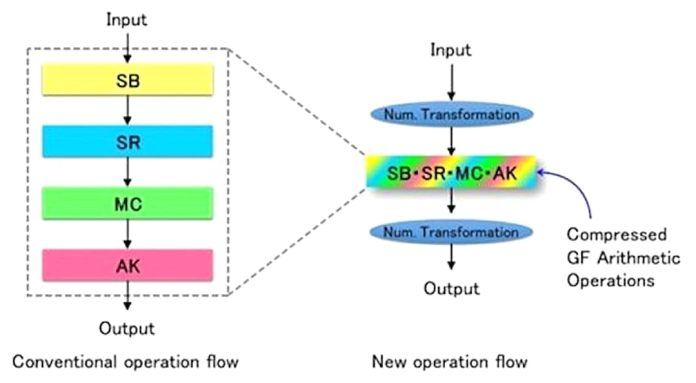A TOHOKU University research group supported by NEC Corporation has discovered a new technique for compressing the computations of encryption and decryption operations and succeeded in developing the world's most efficient advanced encryption standard (AES) cryptographic processing circuit using 50 per cent less energy.
The development makes it possible to include encryption technology in information and communication technology (ICT) devices (including security sensors) that have energy constraints, enhancing the safety of the Internet of Things (IoT).
The IoT will see myriad devices connected to the network and necessitate built-in encryption technology to prevent malicious attacks. However, many battery or cell-driven devices with tight energy constraints are also included in the IoT and running energy-consuming encryption processes on these is a big challenge. One of the most widely used international standard encryption methods is AES. Since this is used in areas such as wireless LANs, it is very important for practical reasons to design energy-saving AES cryptographic processing.
Tohoku University and the NEC Corporation focused on representing the AES encryption algorithm as a calculation based on a special numbering system called a Galois field. The research group succeeded in transforming the input numerical representation into a different one, and is now able to perform multiple computations in one go. Using this method, the number of required circuit elements is reduced significantly. Further, the team confirmed that the original output can be easily recovered by an inverse transformation and devised a computational method for inserting the transformed numerical representation and the inverse transformation before and after the computations, and for carrying out the computations internally using the transformed numerical representation.
In addition, the team designed and developed an AES cryptographic processing circuit (encryption and decryption) based on the new method and confirmed that a single cycle can be carried out using 45 per cent less energy than the best circuit available. It is ideally suited to global communication standards such as SSL and TLS. The team now plans to embed this cryptographic processing technique in actual systems, to demonstrate experiments and apply the proposed method to other encryption algorithms. In addition, a configuration that is resistant to attacks will be considered with the aim of implementing it in the IoT. ♦








